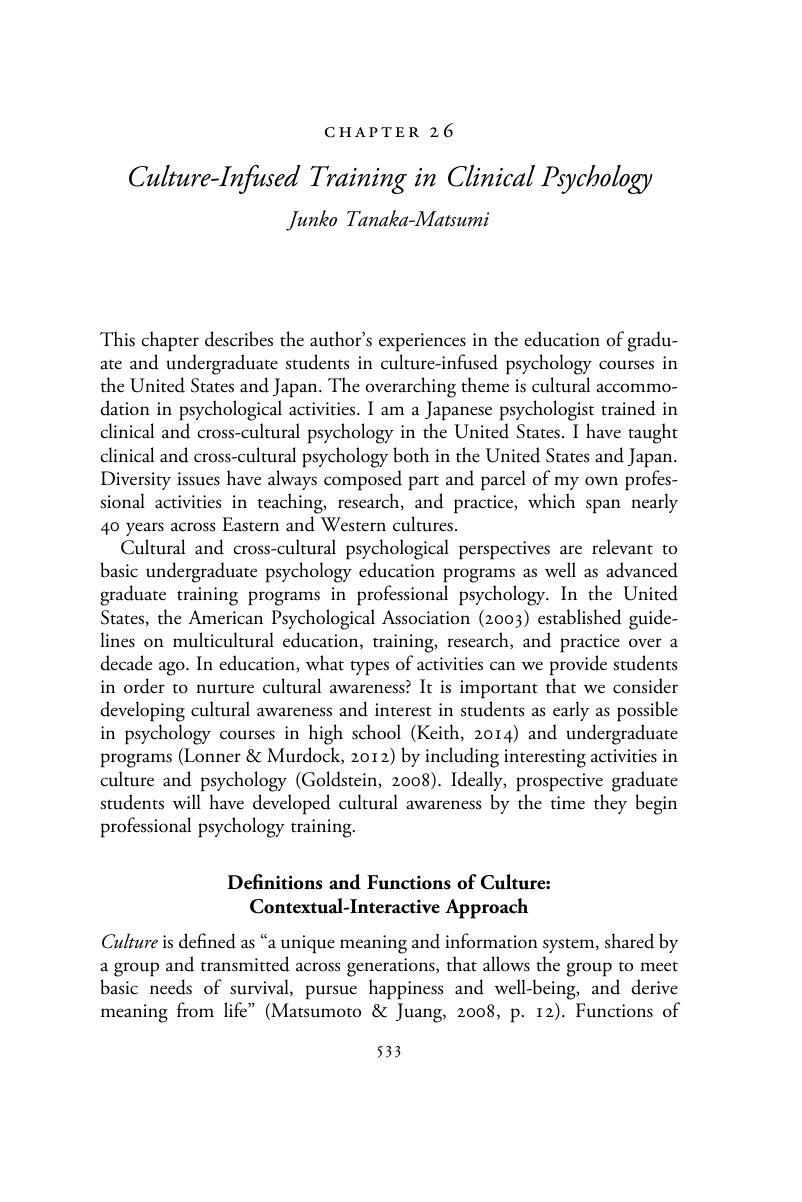Book contents
- Culture Across the Curriculum
- Culture and Psychology
- Culture Across the Curriculum
- Copyright page
- Dedication
- Contents
- Figures
- Tables
- Contributors
- Foreword
- Preface
- Acknowledgments
- Prologue
- Part I Basic Concepts
- Part II Teaching across the Psychology Curriculum
- In the Beginning
- Research and Statistics
- Biological Connections
- Development
- Cognition
- Social Psychology
- Health and Well-Being
- Personality, Disability, and Disorders
- Chapter 23 Personality Is Culturally Constructed and Maintained: Helping Students Think Globally about Themselves and Others
- Chapter 24 Integration of Culture in Teaching about Disability
- Chapter 25 Cultural Issues in the Teaching of Psychological Disorders
- Chapter 26 Culture-Infused Training in Clinical Psychology
- Epilogue
- Index
- References
Chapter 26 - Culture-Infused Training in Clinical Psychology
from Personality, Disability, and Disorders
Published online by Cambridge University Press: 30 March 2018
- Culture Across the Curriculum
- Culture and Psychology
- Culture Across the Curriculum
- Copyright page
- Dedication
- Contents
- Figures
- Tables
- Contributors
- Foreword
- Preface
- Acknowledgments
- Prologue
- Part I Basic Concepts
- Part II Teaching across the Psychology Curriculum
- In the Beginning
- Research and Statistics
- Biological Connections
- Development
- Cognition
- Social Psychology
- Health and Well-Being
- Personality, Disability, and Disorders
- Chapter 23 Personality Is Culturally Constructed and Maintained: Helping Students Think Globally about Themselves and Others
- Chapter 24 Integration of Culture in Teaching about Disability
- Chapter 25 Cultural Issues in the Teaching of Psychological Disorders
- Chapter 26 Culture-Infused Training in Clinical Psychology
- Epilogue
- Index
- References
Summary

- Type
- Chapter
- Information
- Culture across the CurriculumA Psychology Teacher's Handbook, pp. 533 - 544Publisher: Cambridge University PressPrint publication year: 2018



